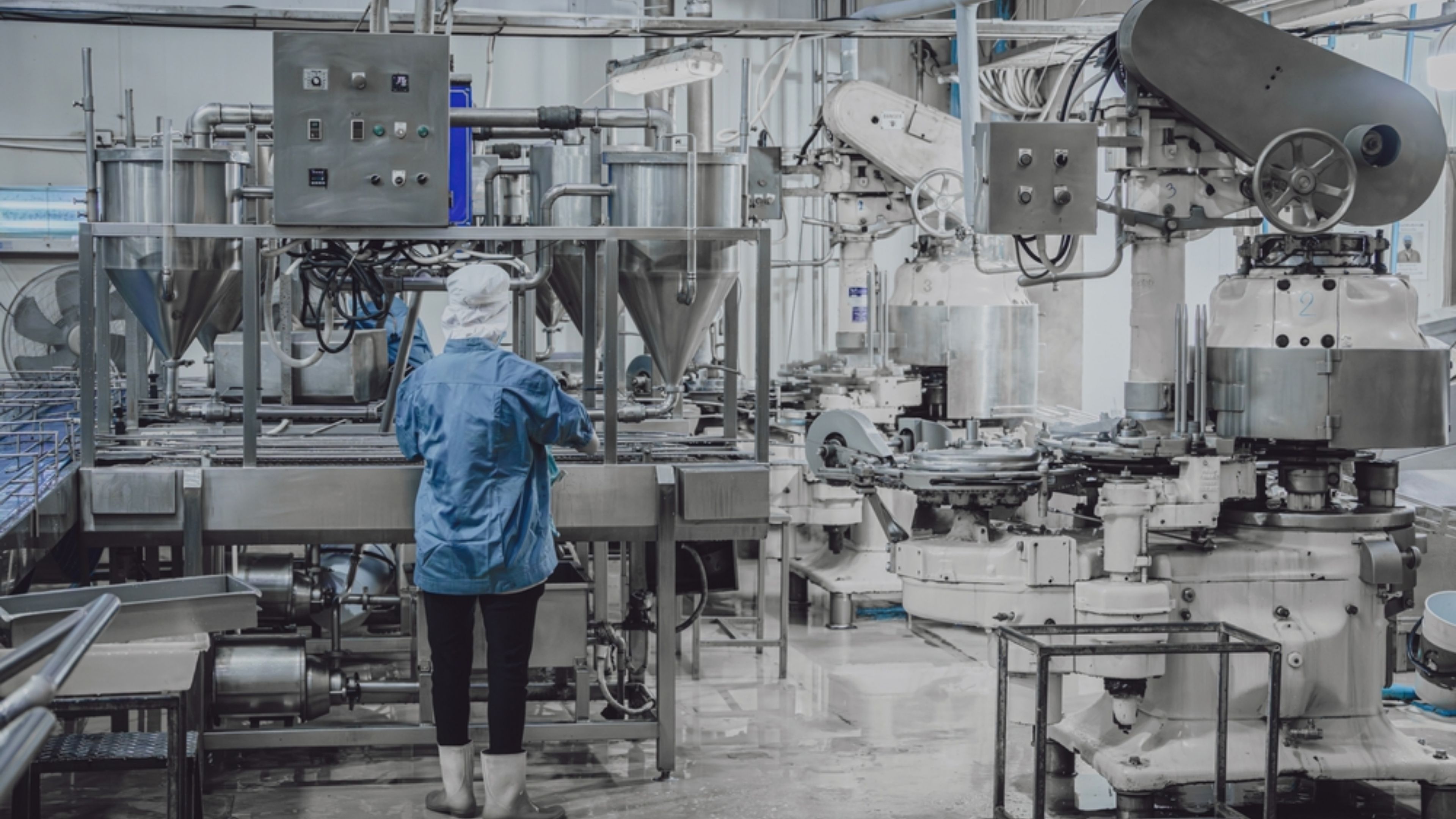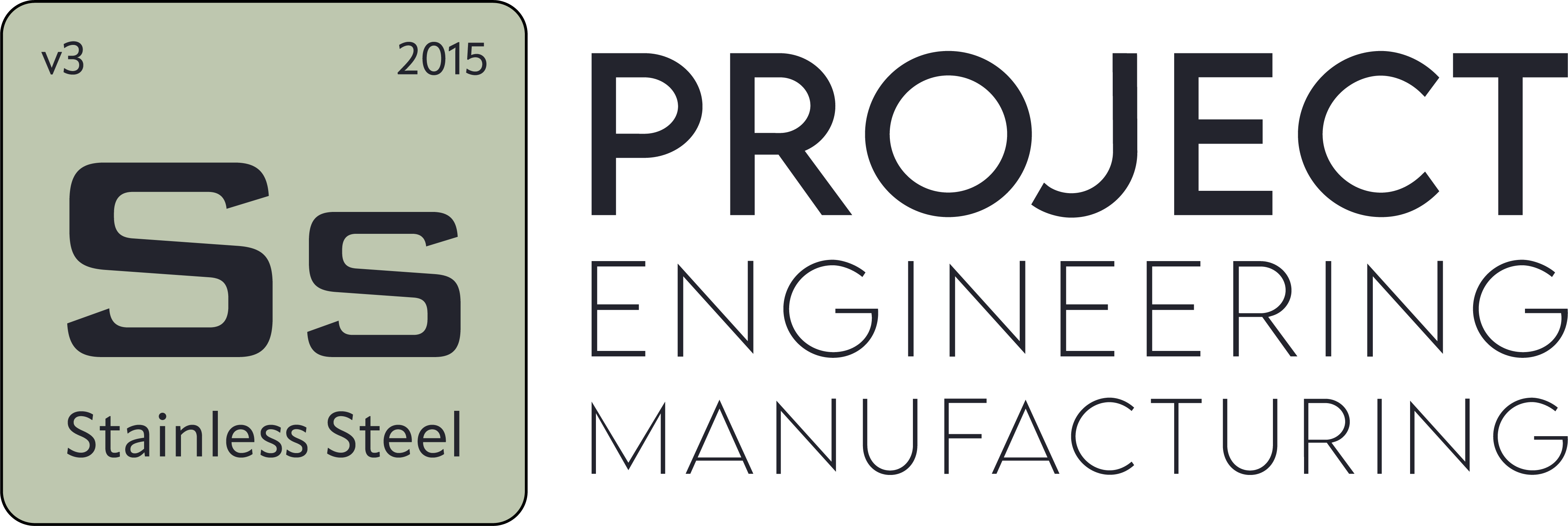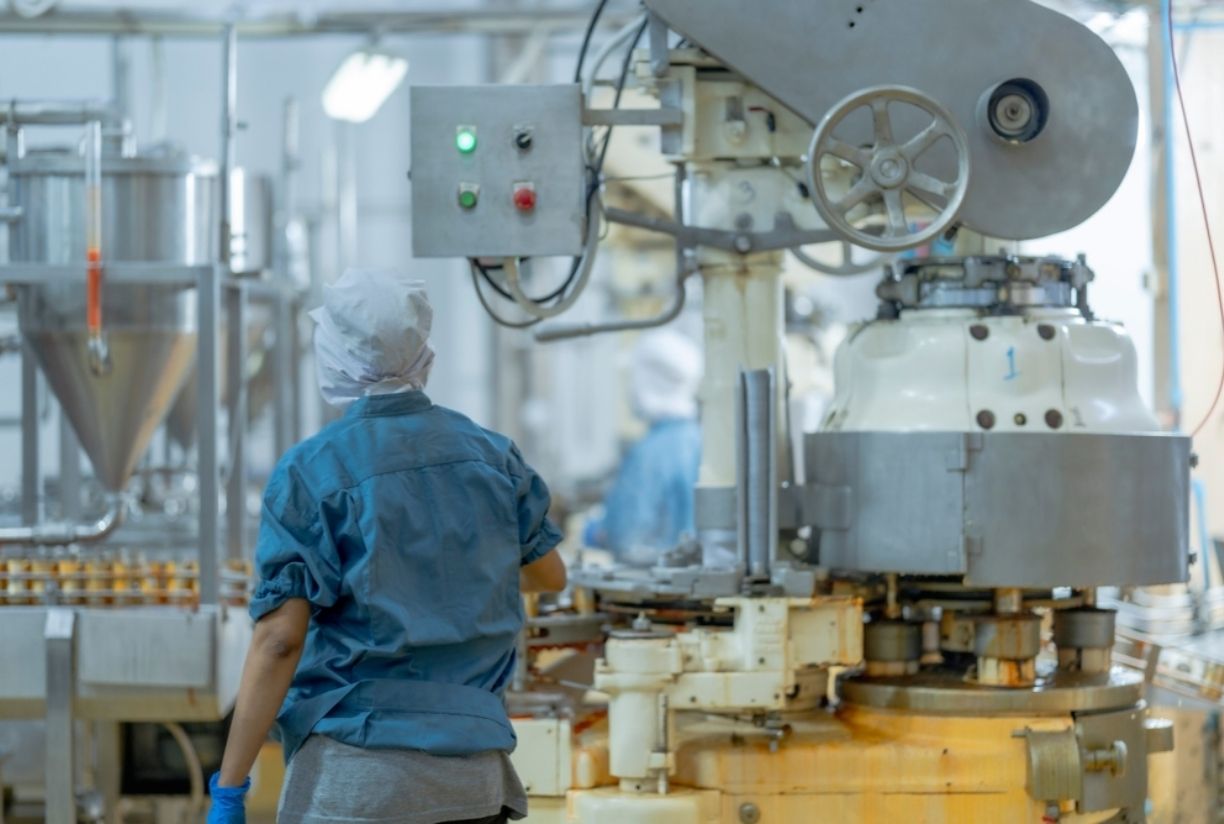CIP and SIP Systems: The Most Effective Cleaning Methods in Hygienic Production Processes
- Blog
- CIP and SIP Systems: The Most Effective Cleaning Methods in Hygienic Production Processes
CIP and SIP Systems: The Most Effective Cleaning Methods in Hygienic Production Processes
Table of Contents
- What Are CIP and SIP Systems and Why Are They Critical in Hygienic Production?
- CIP or SIP: Which Cleaning Method Is More Effective?
- Most Common Mistakes in CIP and SIP Applications
- How CIP and SIP Usage in the Food and Pharmaceutical Industry Guarantees Hygiene
- Can Corrosion and Contamination Be Prevented with CIP and SIP Systems?
- Different CIP and SIP Models: Which Is Optimized for Your Industry?
What Are CIP and SIP Systems and Why Are They Critical in Hygienic Production?
In modern food and pharmaceutical production facilities, ensuring continuous hygienic production depends on effective cleaning of equipment; this is where CIP and SIP systems come into play. CIP (Clean-In-Place) systems allow production lines to be cleaned automatically without disassembly, minimizing errors and contamination risks caused by manual intervention. SIP (Sterilize-In-Place) sterilizes equipment using high temperature and/or chemicals, making it safe from microorganisms.
The effectiveness of CIP and SIP systems depends on executing cleaning cycles with correct parameters. Chemical concentration, temperature, flow rate, and contact time determine system performance; cleaning efficiency is achieved through the proper combination of these parameters. SS-Proje optimizes these parameters in facilities, ensuring both energy and chemical savings while maintaining consistent hygiene standards.
Protecting passive surfaces is also critical in CIP and SIP applications. Biofilm formation must be prevented on surfaces, and metal ion release should be minimized. SS-Proje monitors the integrity of equipment surface passivation through field measurements and validation protocols, implementing corrective measures if needed.
From an industrial hygiene perspective, GMP and ISO requirements mandate regular verification of CIP/SIP procedures. Cleaning efficiency is verified through surface sampling, conductivity measurements, and microbiological tests. These data ensure traceability and continuous control of production processes.
System design details, including pipe diameters, valve positions, and circulation layout, directly affect cleaning effectiveness. Irregular flow may leave some areas untouched by chemical agents; therefore, SS-Proje ensures critical points are cleaned effectively through facility-specific optimization studies. Periodic maintenance and control cycles reduce contamination risks and maintain hygiene continuity.
Standardization of CIP and SIP systems increases production efficiency while guaranteeing product safety. Operator training, automation, and periodic validation procedures allow continuous monitoring of system performance; with SS-Proje’s field support services, facilities can achieve safe production even under the most stringent hygiene conditions.
CIP or SIP: Which Cleaning Method Is More Effective?
In industrial hygiene and food/pharmaceutical production, equipment cleaning is critical for product safety. Two main methods, CIP and SIP, offer different advantages. CIP (Clean-In-Place) provides automatic cleaning without disassembly, removing dirt and microorganisms with chemical agents, temperature, and circulation. SIP (Sterilize-In-Place) reduces microbial load to a minimum with high temperature or chemical sterilization, especially critical for sterilization-required production lines.
CIP is fast and cost-efficient; it is suitable for pipes and tanks. Optimizing chemical parameters ensures high cleaning efficiency. SS-Proje analyzes field data to improve CIP cycle efficiency while optimizing energy and chemical usage.
SIP’s advantage is sterilization power. Especially in pharmaceutical production, where microbial contamination cannot be tolerated, SIP is indispensable. High temperature and pressure combinations ensure elimination of bacteria, yeast, and molds even on passive surfaces. SS-Proje ensures SIP parameters are correctly set for the facility, maximizing process reliability.
Validation and traceability are critical for both systems. Post-CIP or SIP sampling, conductivity, and microbiological testing should support the process. These tests demonstrate consistency and compliance with hygiene standards; SS-Proje integrates validation packages on-site to help operators follow procedures accurately.
The choice depends on the production line’s needs and risk assessment. CIP provides continuity and cost advantage, while SIP delivers superior performance at critical sterilization points. A CIP/SIP combination often represents the optimal solution in many facilities; SS-Proje designs this combination according to facility data, ensuring both hygiene and operational efficiency.
Operator training, automation, and procedure standards enhance the effectiveness of both methods. Periodic checks, tests, and on-site measurements ensure continuous monitoring of systems; SS-Proje’s field support fully manages this process.
Most Common Mistakes in CIP and SIP Applications
The effectiveness of CIP and SIP systems is critical for production line hygiene and product safety. However, several common mistakes frequently occur. One primary issue is incorrect CIP parameters; unsuitable chemical concentration, temperature, or flow rate reduces cleaning efficiency and may leave residues on equipment surfaces.
In SIP applications, insufficient sterilization time or temperature is a common problem. Low temperature or short contact time allows microorganisms to survive, increasing contamination risk. SS-Proje ensures parameters are applied correctly through field measurements and validation protocols.
Another critical error relates to material selection and surface workmanship. Inappropriate stainless steel alloys or post-welding defects weaken the passive layer, reducing cleaning efficiency in both CIP and SIP cycles. SS-Proje verifies material and process compatibility with field data and optimizes risk points.
Operator errors are also common. Incorrect recipe preparation, delayed cleaning cycles, or neglected documentation lead to traceability gaps and procedural deviations. Standard operator training and SS-Proje’s on-site support minimize these risks.
Neglecting cleaning and sterilization validation is another critical mistake. Skipping surface sampling, conductivity measurements, or microbiological tests prevents proof of cleaning efficiency. Therefore, validation should be applied periodically across the production line.
Finally, system design shortcomings invite errors. If pipe diameters, valve positions, or circulation layout are inadequate, chemical agents may be ineffective in some areas. SS-Proje’s facility-specific optimization ensures critical points are properly cleaned and maximizes both CIP and SIP effectiveness.

How CIP and SIP Usage in the Food and Pharmaceutical Industry Guarantees Hygiene
Maintaining hygiene in production lines is vital for product safety and quality in the food and pharmaceutical industries. CIP and SIP systems play a critical role. CIP provides automatic cleaning without disassembly; chemical agents and controlled flow remove residues from surfaces. SIP reduces microbial load with high temperature and/or chemical sterilization, ensuring safety at sterilization-critical points.
The success of CIP and SIP cycles depends on applying correct parameters. Factors like temperature, chemical concentration, flow rate, and contact time directly determine cleaning efficiency. SS-Proje analyzes facility data to optimize these parameters, minimizing energy and chemical usage for efficient operation.
Protecting passive surfaces enhances CIP and SIP effectiveness. Preventing biofilm formation and minimizing metal ion release is necessary. SS-Proje monitors passive film integrity via field measurements and validation protocols, applying corrective measures as needed to maintain continuous hygiene.
GMP and ISO requirements mandate process verification. Sample analysis, microbiological testing, and conductivity measurements provide traceability and document cleaning efficiency. SS-Proje integrates validation packages on-site, ensuring operators follow procedures accurately.
System design—including pipe diameters, valve positions, and circulation layout—also affects cleaning efficiency. Irregular flow may prevent chemical agents from reaching some areas. SS-Proje guarantees critical point cleaning through facility-specific optimization, ensuring CIP and SIP maintain hygiene standards.
Operator training, automation, and periodic control cycles ensure continuous monitoring; SS-Proje’s field support sustains hygienic production conditions.
Can Corrosion and Contamination Be Prevented with CIP and SIP Systems?
Long-lasting, safe operation of equipment in food and pharmaceutical production depends on minimizing both corrosion and contamination risks. CIP and SIP systems play a critical role in preventing these risks. CIP cleans equipment without disassembly, removing dirt and microorganisms using chemical agents and controlled temperature. SIP ensures sterilization, eliminating microorganisms in critical areas.
Protecting passive surfaces is vital for preventing corrosion and contamination. Proper passivation prevents metal surfaces from becoming reactive and enhances cleaning effectiveness during CIP/SIP cycles. SS-Proje continuously monitors passive layer integrity via field measurements and validation, intervening as needed.
Biofilm formation, metal ion release, and micro-particle detachment in critical equipment areas increase contamination risk. Regular CIP and SIP cycles minimize these risks. SS-Proje guarantees both cleaning effectiveness and surface protection at critical points with optimized facility-specific cleaning cycles.
System design and process parameters are crucial. Inadequate pipe diameters, valve positions, or circulation layout can reduce chemical agent effectiveness and increase corrosion risk. CIP/SIP optimization targets these areas, ensures uniform cleaning, and preserves equipment integrity.
Validation and traceability support process sustainability. Sample analysis, microbiological tests, and conductivity measurements provide traceability and minimize contamination risks. SS-Proje’s field support enables continuous monitoring and optimization throughout operations.
Operator training, automation, and periodic control cycles maximize CIP and SIP effectiveness, keeping corrosion and contamination risks under constant control.
Different CIP and SIP Models: Which Is Optimized for Your Industry?
Different CIP and SIP models are used to ensure hygienic processes in industrial production. Each model is optimized according to facility production capacity, equipment type, and hygiene standards. CIP systems are especially suitable for tanks and pipelines, providing cleaning with chemical agents and controlled flow. SIP systems reduce microbial load in critical lines requiring sterilization.
CIP models include counterflow, rotary, and modular designs. In counterflow systems, chemical solution flows backward through the production line, cleaning surfaces and even hard-to-reach areas. Rotary and modular systems maximize cleaning efficiency and conserve chemicals. SS-Proje analyzes facility data to recommend the best CIP model, enhancing process efficiency.
SIP models are optimized according to temperature and pressure combinations. Steam sterilization systems are critical, especially in pharmaceutical production. SIP systems supported with chemical sterilization are preferred for heat-sensitive product lines. These models minimize microbial contamination risk and preserve passive surface integrity.
When choosing, system design, pipe diameters, valve positions, and flow layout must be considered. Poor design may prevent chemical agents from reaching some areas. SS-Proje ensures critical point cleaning through facility-specific optimization, enhancing CIP and SIP effectiveness.
Operator training, automation, and periodic validation allow continuous monitoring of system performance. Traceability and data-driven control clearly identify which model is suitable for each process, maintaining hygiene standards consistently.


